
Tech Corner: Safety Inspection Form
Functionality: What does it do?
Management by walking around (MBWA), safety observations, and safety inspections are common terms for similar practices. All involve observing the daily work environment to assess safety practices. Historically, these types of observations have been completed using paper and pencil forms that typically get added to a binder and stored on a shelf—never to be reviewed again. KTL’s Safety Inspection Form provides an online tool for supervisors and/or employees to observe and document safety practices and/or inspect equipment and then use those observations to improve safety performance.
Benefits: Why do you need it?
KTL’s Safety Inspection Form offers the following:
- Provides a list of questions or items to inspect (e.g., equipment, safety procedures) to help ensure consistent and repeatable inspections.
- Creates an electronic means to conduct and document safety inspections.
- Collects data that can then be analyzed to identify common problems.
- Sends notifications, including alerts for negative findings and exceeding certain thresholds, as well as weekly summaries.
- Facilitates the company’s ability to provide recommended corrections to the employee being observed or to alert maintenance of necessary equipment repairs.
- Helps the company to focus resources on correcting common safety issues where return on investment (ROI) is greatest.
Technology Used
- SharePoint
- Power Apps
- Power Automate
- Power BI

Comments: No Comments
Eliminating the GRAS Self-Affirm Pathway
Generally Recognized as Safe (GRAS) is a concept that harkens back to the Food Additives Amendment of 1958, when it was first established to regulate pre-market approval of new food additives, while exempting substances with a long history of safe use. Since that time, the GRAS program has undergone several changes impacting how industry manages food ingredients. On March 10, 2025, the GRAS program came under new scrutiny, as the U.S. Department of Health and Human Services (HHS) announced its intent to explore potential rulemaking to eliminate the self-affirmed GRAS pathway.
GRAS Beginnings
The Food and Drug Administration’s (FDA) Federal Food, Drug, and Cosmetic Act (FDCA) of 1938 first established the need for scientific proof of safety before marketing new food products. It did not, however, anticipate the bureaucratic congestion that would arise due to unnecessary regulation of commonly used food additives, such as salt, vinegar, and spices. To address this, Congress passed the Food Additives Amendment in 1958, establishing the GRAS concept.
While this Amendment improved regulatory efficiency, the FDA remained the sole gatekeeper of what did and did not qualify for the GRAS exemption. It was not until 1972, when the FDA created the GRAS affirmation process, that individual companies could begin petitioning FDA to review and approve GRAS status. This approach placed the onus for identifying new, in-need-of-review products on individual companies, while the FDA maintained responsibility for reviewing and approving the ingredients.
Self-Affirmation
As more products began to flood the market, the backlog of GRAS petitions outgrew the FDA’s resources, which led to the development of the GRAS notification system in 1997. Under this system, companies could self-determine if their new ingredients qualified as GRAS-exempt based on scientific evidence. What’s more, companies were granted autonomy to notify the FDA (or not) of their GRAS determination, setting the precedent to completely bypass FDA review.
The FDA issued the GRAS Final Rule in 2016 to formalize the notification procedure—requiring submission of detailed scientific evaluations and safety studies (i.e., toxicology reports, historical consumption data, and expert evaluations) when making a GRAS notification. However, companies retained the option to choose whether to notify the FDA, leading to a robust archive of food additives with no public record of safety review. Today, the Pew Research Center estimates that roughly 1,000 such chemical additives in the food supply chain are self-affirmed as GRAS by food manufacturers.
Policy Loophole
In its March 10, 2025 press release, the HHS announced its desire to close what it considers to be this self-affirmation “policy loophole”. According to HHS, “Eliminating the self-affirmation process would require companies seeking to introduce new ingredients in foods to publicly notify the FDA of their intended use of such ingredients, along with underlying safety data, before they are introduced in the food supply.”
Several states, including California, Illinois, Missouri, Washington, New York, and West Virginia, are passing their own legislation to address food safety and transparency concerns caused by GRAS. For example, the California Food Safety Act prohibited the statewide sale or manufacture of foods containing four chemical additives, and West Virginia recently signed a law to ban foods containing seven artificial dyes. Even Congress attempted to overhaul the GRAS rule in September 2024 through the Toxic Free Food Act.
What Does It All Mean?
By eliminating the self-affirmation process, manufacturers would be required to publicly notify the FDA of their intended use of such ingredients and supply safety data before the ingredients are introduced. Eliminating the GRAS loophole would undoubtedly introduce more transparency to the market about what ingredients are used by food companies and prohibit major chemical changes to food without public notice. However, this change could also potentially further stress an already under-resourced FDA, create delays in GRAS review and approval, and hinder food manufacturers’ ability to quickly switch to other GRAS ingredients if there are supply chain issues. And while transparency is good, it could cause consumer confusion regarding information about the toxicology of ingredients and associated hazards.
Planning Ahead
Given the trajectory of GRAS and its historical timeline, new legislation seems to be on the horizon. While the exact changes and requirements are not known, there are actions manufacturers can take now to proactively manage GRAS ingredients:
- Take an inventory of all current products with GRAS statements. Understand what those products are and how you use them.
- Make sure you have all the necessary records (e.g., safety data sheets (SDS), toxicology reports, and technical data sheets) for your GRAS products. You may be required to submit these and having them ready to go should help expedite the process.
- Plan for delays if you rely on GRAS products. FDA may have many ingredients to review/approve if the self-affirmation clause is eliminated, and this could create a bottleneck. Find substitutions in your supply chain in case they are needed.

Don’t Miss KTL at the 2025 Food Safety Summit
Join KTL at one of the premier events in the food industry–the 2025 Food Safety Summit. The Summit offers a unique opportunity for attendees to learn real-world solutions from leaders in food safety and stay informed on the latest food safety trends, innovations, emerging challenges, and more.
- When: May 12-15, 2025
- Where: Donald Stephens Convention Center, Rosemont, Illinois
- Who: Retailers, food processors, distributors, food manufacturers, growers, food service, testing laboratories, importing/exporting, law firms, and other food safety professionals
- Find KTL: Stop by our booth (#408) in the exhibit hall!
Tech Tent Case Study Presentation
Be sure to also update your agenda to attend KTL’s Tech Tent presentation on Wednesday, May 14 at 11:15 am CT:
Case Study: Using Microsoft SharePoint® and the Power Platform to Manage Food Safety Programs
Building a food safety system doesn’t have to be complicated or expensive—not when most companies already have the software they need. See how KTL helps food companies build dynamic data management tools to collect, track, and report food safety compliance information. This presentation will highlight our standard modules and most used tools and templates, including:
- Inspections and Monitoring
- Corrective Actions
- Task Management
- Preventive Maintenance
- Supplier Management
- Document Control
- Records Management
- Data Tracking and Trending
- Reporting Dashboards
Join KTL to see these modules in practice and learn from experts with food safety and IT expertise how your company can benefit from this approach.

Comments: No Comments
Traceability Rule Compliance Date Extension
Traceability has been a hot issue for most food companies since the Food and Drug Administration (FDA) passed the final Food Traceability Rule in November 2022, especially with the original January 2026 compliance deadline approaching. However, food companies will likely have extra time to prepare, as the FDA announced on March 20, 2025 its intention to extend the compliance date for the Food Traceability Rule by 30 months.
Additional Time
KTL originally reported in our Top Food Trends for 2025 article of speculation that this deadline could be delayed due to a provision in the current draft House appropriations bill that would prohibit funding for implementation, administration, or enforcement of these regulations. According to FDA, “The compliance date extension affords covered entities the additional time necessary to ensure complete coordination across the supply chain in order to fully implement the final rule’s requirements—ultimately providing FDA and consumers with greater transparency and food safety.”
The FDA is planning to follow appropriate procedures and publish a proposed rule to extend the compliance date at a later time to be determined. The Agency remains committed to implementing the full requirements of the final rule but giving industry additional time to comply and itself time to provide additional technical assistance, tools, and other resources to assist industry.
Stay the Course
Regardless of the compliance deadline, organizations should continue working on their traceability systems and programs. This includes performing traceability exercises to help identify gaps, testing protocols and verifying effectiveness, implementing corrective actions, and ensuring adequate traceability processes are in place. Investing in a good technology solution that integrates with the food safety management system (FSMS) will help to further streamline the process.
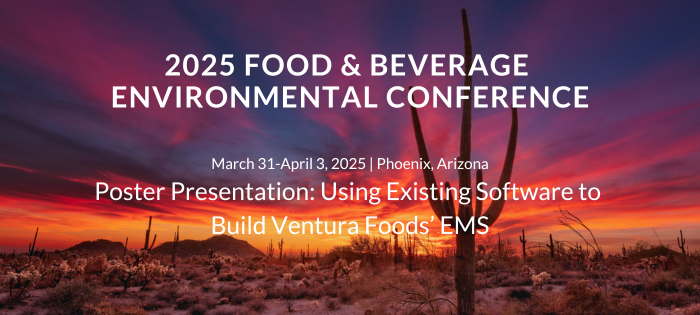
KTL to Present at the Food + Beverage Environmental Conference
The Food + Beverage Environmental Conference (FBEC) is the premier and most comprehensive environmental event for the food and beverage industry in the U.S., focusing on the latest trends and innovations affecting sustainability, water resource management, supply chain, air quality, environmental compliance, and much more.
When: March 31 – April 3, 2025
Where: Rennaissance Downtown Phoenix
Who: Environmental professionasl in any business related to the food and beverage industry
Poster Presentation
Be sure to stop by and see the KTL and Ventura Foods poster at the Poster Session & Social Hour on Thursday, April 3 at 5:00 pm: Using Existing Software to Build the Ventura Foods EMS. We will talking about how Ventura Foods built and implemented an ISO 14001 EMS to meet customer requirements with limited resources.

Comments: No Comments
5 Tips to Become a Recycling Superstar
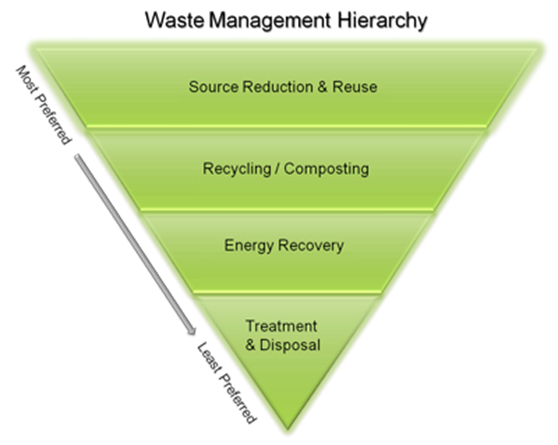
No single waste management strategy is suitable for managing all waste streams in all situations (Environmental Protection Agency (EPA)). As such, EPA’s non-hazardous materials and waste management hierarchy ranks the various waste management strategies from most to least environmentally preferred. Not surprisingly, the hierarchy emphasizes reducing and reusing—followed by recycling—as best practices for sustainable materials management, when possible.
While the best way to reduce waste is to never create it, recycling is a valuable way to collect used, reused, or unused items that would otherwise be considered waste and turn them into something valuable. From Fortune 500 companies to local businesses, to the restaurant on the corner—all have materials that can and should be recycled. The five tips below offer best practices for effectively managing your recycling efforts.
1. Conduct a trash audit.
A trash audit is a process in which an organization systematically analyzes and evaluates the contents of its waste, typically by sorting through the trash to identify the types and quantities of materials being discarded. This in-depth process provides a good baseline in developing a Recycling Program, as it helps to document the contents and quantity of your waste streams and then allows you to define how that waste gets managed.The audit helps to answer questions such as: What are you throwing away? How much is wasted food? Can you separate that out and send it to a composter? Can you stop making that trash? Can you reuse something? Can you sell it to someone else? Can you recycle it?
While not all trash can be reused or repurposed, it is consistent with EPA’s hierarchy to identify the materials produced that can be reused or repurposed as the first and most sustainable waste management solution (e.g., some tools can be sent back to the manufacturer to be refurbished and resold, or there may also be a “second life” outlet for materials). If materials are not able to be reused, the next best consideration is recycling.
2. Understand state and local regulations.
Once your trash audit identifies what items you want to recycle, it is important to consider the regulations. Different states and local governments may have specific requirements for the materials you want to recycle. For example, many states have compliance requirements for electronic wastes, used oil, or other universal wastes. In addition, EPA has very specific requirements for solid and hazardous waste recycling to ensure it is managed properly to avoid environmental and safety hazards. Engage experts, where necessary, if you have questions about certain materials that may have very specific or unclear requirements.
3. Implement a Recycling Program.
Based on the trash audit and regulatory requirements, a Recycling Program can be developed to serve as the roadmap for what gets recycled and how. The Recycling Program should clearly:
- Define what materials get recycled.
- Discuss proper disposal of materials, focusing on the most common items employees would handle in their day-to-day tasks.
- Identify collection points, so employees understand where to put items for recycling.
- Detail storage procedures for recyclable materials.
- Outline roles and responsibilities, including the parties responsible for recycling (see below).
- Provide for worker training to ensure the program is followed as intended.
- Reinforce the purpose of recycling and leadership’s commitment to the cause.
- Address how the program will be communicated to visitors, contractors, customers, shareholders, etc.
4. Partner with the right recyclers.
An important part of your Recycling Program is finding reputable recyclers who understand recycling regulations and are certified to handle the materials you are generating. This means working with recyclers who are transparent. Recyclers who are open about their practices are less likely to mishandle your recyclables than shady operators who could end up getting your company in a lot of trouble. Your recycler should help you identify the best ways to recycle your materials (e.g., setting up separate dumpsters for paper, plastic, food) and identify whether there are any cash-back opportunities for recycling certain materials (e.g., cardboard, scrap metal, electronic waste, etc.).
5. Maintain safe storage and handling practices.
As noted above, a trash audit will help you know what you are recycling. You also need to know how to properly store these materials while they are waiting to be recycled so they do not become a bigger hazard. For example, keep batteries for recycling in cool, dry places away from heat.
Conduct a proper risk assessment for the proposed storage spaces to capture and mitigate potential risks before finalizing your choice, document this in your Recycling Program, and then train employees on how to safely handle the material they are bringing to the recycling area. Precautions may include having the proper fire detection and suppression equipment for the area where you are storing material for recycling, or ensuring employees have the proper personal protective equipment (PPE) to wear when handling materials.
Creating a Recycling Culture
The above five tips can help ensure you have the systems, practices, programs, and partners in place to manage your trash and recycling. By following them, organizations can streamline their waste management processes, comply with environmental standards, and promote resource conservation and cost savings. But to truly become a “recycling superstar”, it is also important that you:
- Avoid all or nothing thinking—set realistic goals for what you can accomplish while still complying with regulations.
- Implement robust quality control processes to avoid making mistakes.
- Think creatively about how your team can work together reduce, reuse, repurpose and recycle your trash and get closer to zero waste.
- Measure your results. Conduct your trash audits annually to assess what is working and what is not and then set new goals to continually improve.
Effective waste management and recycling are essential for organizations striving to operate sustainably and reduce their environmental impacts. Ultimately, fostering a culture of creativity, continuous improvement, and accountability will lead organizations closer to their zero-waste goals, benefiting the environment and the bottom line.

Tech Corner: Power Automate Tasks
Functionality: What does it do?
As part of Microsoft’s Power Platform®, Power Automate® is a workflow automation tool used to automate repetitive tasks and workflows. The purpose of workflow automation tools is to streamline manual processes and tasks in order to maximize company time and resources, increase operational efficiency, and improve overall business productivity.
Common Power Automate tasks include the following:
- Notifications: This can be as simple as creating a notification when something is submitted or changed or setting alerts to act according to a designated schedule (e.g., seven days before due date).
- Approvals: Documents and list items can be routed to specific individuals by email with a simple button to approve or decline and then automatically move along to the next step in the process.
- Document Management: Email attachments can be automatically added to OneDrive® or SharePoint; metadata (e.g., time/date, sender, and email body) can also be added.
- Form Processing: Form processing can automatically create ID numbers for list items to help with tracking. In addition, data from one form can be used to populate multiple lists. For example, entering data into a customer feedback form includes a checkbox asking if it requires a corrective and preventive action (CAPA). If so, relevant data from the feedback form populates a new entry in the CAPA list.
- Records Management: When a record is created, the retention period can be added. When the retention period expires, the record is then automatically archived or deleted.
- Calendar Management: With calendar management, you can do things like email yourself a list of your calendar entries daily or weekly, email reminders for any calendar entries you have not yet responded to, and create Outlook events or meetings from a Power App® button.
- Data Management: Large data sets can be transferred easily from Microsoft Excel® to SharePoint. Data can also be manipulated, cleaned, or transformed during or after the transfer.
Benefits: Why do you need it?
- Fewer mistakes. Replacing manual data entry with automation reduces opportunities for human error and the potential mistakes, inaccuracies, and costs that can accompany it.
- Streamlined processes. Workflow automation creates more efficiency by automatically making assignments and moving projects/documents/tasks along in the process. It is also easier to track and manage processes and performance when all steps are in Power Automate.
- Improved productivity. Automating manual tasks frees up time and resources to focus attention elsewhere. Being able to easily track a project or process through an automated system can further improve productivity and ensure tasks are completed as planned.
- Enhanced collaboration and accountability. A clearly designed workflow helps ensure all employees understand the process and their role in it. A common system further enables cross-functional collaboration and improves accountability.
- Informed business decisions. Power Automate offers real-time reporting and performance metrics that can be used to inform decisions and modify processes to enhance performance.
Technology Used
Microsoft Power Automate
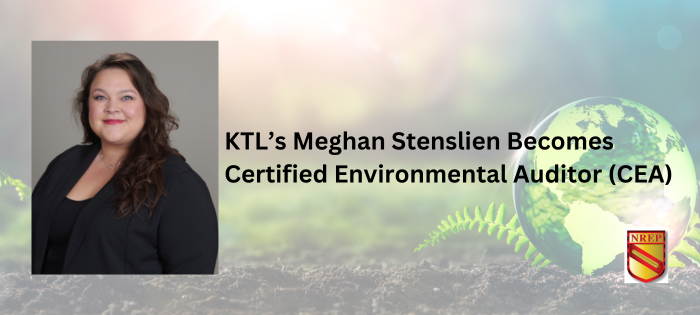
Comments: No Comments
KTL Consultant Meghan Stenslien Becomes CEA
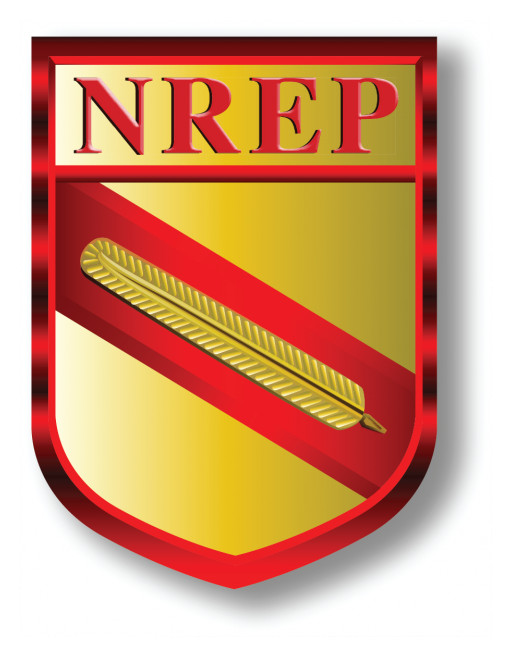
Consultant Meghan Stenslien has become KTL’s newest Certified Environmental Auditor (CEA). Meghan has completed all experience and eligibility requirements—including recently passing the rigorous National Registry of Environmental Professionals (NREP) CEA exam. The CEA certification is a specialty certification program intended for professionals conducting environmental compliance and risk audits of operating facilities, related equipment and ongoing procedures.
Meghan is a Consultant with a diverse background in food safety; quality; and environmental, health, and safety (EHS) compliance. She has conducted routine environmental, safety, quality, and food safety environmental audits and facility assessments and designed programs, policies, and procedures to effectively manage requirements to help ensure regulatory compliance. In addition to her CEA certification, Meghan is a certified ISO 45001 (safety) and 14001 (environment) Lead Auditor, Wisconsin Department of Natural Resources (WDNR) Green Tier Auditor, R2 certified Lead Auditor, and HACCP certified.
NREP is widely considered to be the foremost not-for-profit organization in the environmental and safety industry. Earning a CEA certification demonstrates the highest level of knowledge, experience, and education in the environmental field.

Comments: No Comments
Preventing Foodborne Illness and Avoiding Recalls
The U.S. experienced several high-profile food recalls in 2024 that have caused illnesses and deaths—and heightened public awareness and unease. The emergence of new bacterial and viral strains and the evolution of pathogens that are becoming resistant to traditional food safety measures are growing concerns when it comes to preventing foodborne illnesses. According to the U.S. Public Interest Research Group’s Food for Thought 2025 Report, hospitalizations and deaths from contaminated food doubled in 2024, and recalls from Listeria, E. coli, and Salmonella increased by 41%.
Regulatory Focus on Microbiological Safety
The Food and Drug Administration’s (FDA) new unified Human Foods Program outlines a number of strategies focused on microbiological food safety that are intended to prevent and mitigate foodborne illnesses. In January 2025, FDA also released the draft Establishing Sanitation Programs for Low-Moisture Ready-to-Eat (LMRTE) Human Foods and Taking Corrective Actions Following a Pathogen Contamination Event: Guidance for Industry to help manufacturers of LMRTE human foods comply with 21 CFR part 117 and establish routine sanitation programs that can prevent pathogen contamination events.
FDA’s LMRTE Guidance specifically discusses the importance of establishing and implementing a detailed Sanitation Program and routine environmental monitoring to help prevent pathogen contamination events.
Sanitation and Good Manufacturing Practices (GMPs)
Having a properly implemented Sanitation Program and adequate GMPs provides the essential foundation for preventing pathogen harborage and product contamination events.
GMPs are intended to reduce cross-contamination by defining hygienic personnel practices, controlling traffic and product flow, ensuring proper equipment design and maintenance, and ensuring sanitary building conditions. To be effective, GMPs must be developed based on the company’s specific operations and must be implemented consistently to minimize the risk of contamination and foodborne illness.
Correspondingly, Sanitation Programs include written procedures outlining how cleaning and sanitizing tasks should be done, including the frequency and methods for cleaning surfaces, equipment, and utensils. Sanitation Programs should be regularly monitored, which might include visual checks/inspections for cleanliness. Lastly, Sanitation Programs need to be verified for effectiveness, which brings in environmental monitoring.
Environmental Monitoring
From a consumer protection perspective, environmental monitoring is intended to protect consumers by keeping harmful pathogens from contaminating the food we eat. An Environmental Monitoring Program (EMP) refers to an entire program that focuses on identifying, monitoring, and mitigating environmental risks, particularly pathogens—and foodborne illness—that may compromise food safety. EMPs involve systematic sampling and testing of the production environment for pathogens, spoilage and indicator organisms, and allergens to verify that the Sanitation Program and associated controls are working as intended to prevent foodborne illness.
Environmental monitoring is typically done by swabbing various surfaces in a designated bio-zone for pathogens and sending those samples to an accredited lab for analysis. This monitoring helps to:
- Assess how effective the plant’s cleaning, sanitation, and cross-contamination processes are.
- Determine whether there are any pathogen harborage points in the facility so it can respond accordingly (e.g., adjusting cleaning procedures, addressing equipment or facility issues, etc.).
Ultimately, the purpose of an effective EMP is to help a facility identify and implement strategies to eliminate pathogens and prevent their recurrence. It can help serve as an early warning system for identifying a potential contaminant before it spreads throughout the facility and into food that reaches the consumer. Analyzing EMP data collected over time for trends is particularly effective in continuously improving sanitary conditions.
To-Do Today
There are a number of key actions food processors can undertake today to prevent environmental pathogens from contaminating their facilities and food products:
- Apply GMPs. GMPs apply to EMPs, as with every other aspect of a strong Food Safety Program. GMPs that will impact environmental monitoring results include employee hygiene practices, cross-contamination controls, sanitary facility and equipment design, and cleaning and sanitation processes.
- Evaluate, implement, and verify preventive controls. Identify your greatest risks for environmental pathogens and proactively develop strategies to implement controls in your process flow. These may include controlling pedestrian walkways to avoid personnel contamination; using dedicated tools, equipment, and/or staff post-process; having special uniforms for staff, etc. Just as important, you must verify the performance of your preventive controls through environmental monitoring and take corrective action immediately if problems arise.
- Ensure employees and other resources are qualified. Employees responsible for sanitation, sampling, and overseeing the EMP must have the necessary training and/or experience for assigned duties. In addition, any outside labs used for environmental testing must be accredited under ISO 17025.
- Regularly review and update the Sanitation Program, GMPs, and the EMP. Products, operations, equipment, employees, processes, and other environmental factors change—and all of these can impact the Sanitation Program, GMPs, and the EMP. Conducting periodic reviews to ensure processes and procedures reflect any new conditions is important in ensuring a facility’s overall hygiene and its products’ quality and safety. Reviewing the EMP results and trending on a regular basis and adjusting your program according to the results is important to keep ahead of any potential issues.
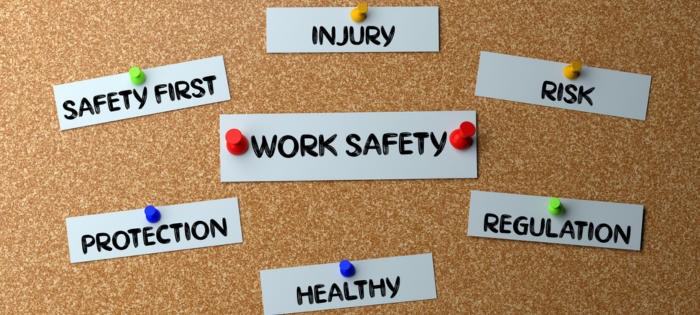
Comments: No Comments
5 Resolutions for Health and Safety
As discussed in KTL’s recent EHS: Top Trends for 2025 article, there are a number of anticipated challenges and opportunities in environmental, health, and safety (EHS) for 2025—some ongoing and some just gaining traction with impacts yet to be known, particularly with the change in Administration just taking hold. Regardless, the importance of investing in a strong health and safety program cannot be underestimated. Here are five tips to help start the year strong in health and safety.
1. Plan for Consistency. With so many changes happening in the world at such a rapid-fire pace, consistency creates a predictable environment for employees to maintain positive health and safety practices. Consistency in both action and communication is equally important in the health and safety world. Inconsistent expectations and actions lead to inconsistent behaviors. Ambiguity in messaging and instructions can further cause health and safety hazards.
Keep it simple and consistently reinforce the same message to elicit consistent safety performance. As some examples:
- Always use the right tool for the job.
- Stop work when needed to address hazards.
- Communicate with other personnel about hazards.
- Always wear the proper personal protective equipment (PPE) for each task.
2. Focus on Continuous Small Improvements. Continuous improvement does not mean erratic change. Change should be sustainable, and that happens best when it is introduced and implemented incrementally. Small changes can lead to big differences; it just requires a plan. Identify the big goal, and then define those small steps needed to reach it. Thinking big but acting small can help create buy-in across the organization, consume fewer resources, and create small “wins” more quickly to drive momentum toward reaching the big goal.
3. Prioritize Communication in All Forms. When it comes to the characteristics of an excellent safety culture, communication is at the top. It is vital that all levels of management (i.e., senior, middle, supervisory) communicate their commitment to safety clearly to workers. It is equally important that workers feel empowered to discuss their safety concerns. Having a safety culture where workers do not feel like they can speak up at work when it comes to their safety can present significant threats to workers and the overall well-being of the company.
- Use a variety of communication channels (e.g., one-on-one conversations, regular safety briefings, written materials, visual aids) to improve worker understanding.
- Practice active listening; communication goes two ways!
- Be clear, concise, and consistent in your messaging (see #1 above).
4. Incorporate Leadership. In its Recommended Practices for Safety and Health Programs, the Occupational Safety and Health Administration (OSHA) outlines best practices for implementing and maintaining a health and safety program. Management leadership is a core element. According to the guide, management provides the leadership, vision, and resources needed to implement an effective health and safety program. Management can exhibit this in several ways:
- Demonstrate a commitment to continuously improving workplace health and safety, including eliminating hazards and protecting workers.
- Make safety and health a core organizational value with associated health and safety goals and objectives.
- Establish program expectations and responsibilities that engage employees.
- Provide adequate resources and support for the program
- Set a good example when it comes to prioritizing health and safety.
- Communicate regularly with workers about the importance of workplace health and safety.
5. Encourage Worker Participation. Worker participation is another of OSHA’s core elements of workplace health and safety in its Recommended Practices for Safety and Health Programs. Engaging workers at all levels in establishing, implementing, evaluating, and improving health and safety in the workplace creates buy-in. It is important that organizations encourage workers to report health and safety concerns and promote a psychologically safe environment. Organizations should also work to actively engage employees in other health and safety initiatives, such as conducting hazard assessments, developing policies, serving on safety committees, leading toolbox talks, and more.
All of these tips come down to one thing—protecting employee health and safety. Regardless of external factors (e.g., regulatory uncertainty, supplier requirements, consumer demands, financial incentives, etc.), protecting employees should always be a top priority, and these five tips can help ensure you start the year strong.
